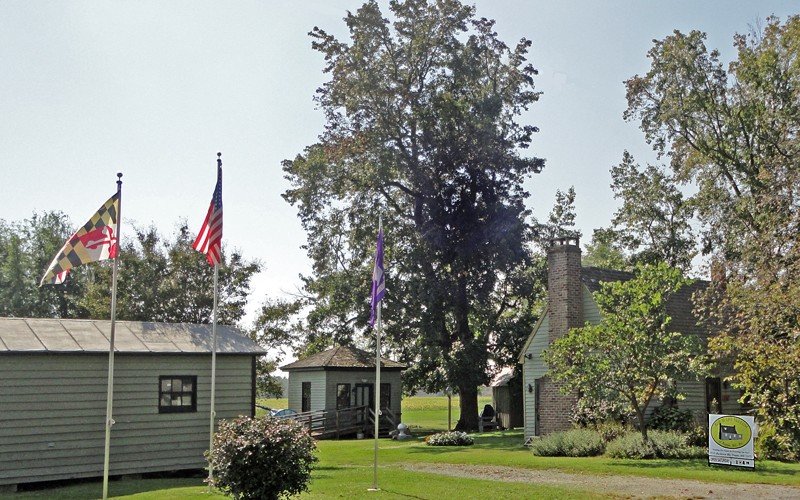ShoreBread was picking up a few gifts at Tammy’s Cool Things in Trappe recently when we decided to take a detour and check out the Rural Life Museum right down the road. The museum houses artifacts from the history of farming on the Shore, along with other relevant items to the area such as displays on Nathaniel “Nace” Hopkins, a former slave who served in the Union Army and later started a school for African American children, and J. Franklin “Home Run” Baker, who is listed in the Baseball Hall of Fame.
Four different buildings displaying exhibits stand ready to welcome visitors as they arrive at the museum and include the Defender House, Carriage House, Scale House and Slaughter Smokehouse. We decided to start out in the largest building, the Defender House. This is just one aspect that makes the museum unique; the buildings that house historical artifacts are also historically significant. This building got its name from the Defender Packing Co. cannery which was once located nearby. The Defender House provides a peek into the past while serving as an example of the type of homes built on the Eastern Shore during the 18th century.
The main displays for this building focus on J. Franklin “Home Run” Baker and Nathaniel “Nace” Hopkins. Baker was a third baseman from Trappe who played professionally from 1908 to 1922 and helped lead the Philadelphia Athletics to win the 1910, 1911 and 1913 World Series. He is considered to be one of the best third baseman of the pre-war era and received his nickname after leading the league in 1911 in homeruns. Baker was also elected into the Baseball Hall of Fame in 1955.
Nathaniel “Nace” Hopkins is commonly referred to as Uncle Nace in Talbot County and has an inspiring legacy. Hopkins was born a slave around 1831. He eventually served in the Union Army and returned home after the war to help improve life for many of the African Americans in the area. He opened a school for black children and also created Emancipation Day, which became the longest continuously running celebration on the Eastern Shore. This holiday commemorates the Emancipation of slaves in Maryland after the adoption of the state’s new constitution in 1864. Today this holiday is known as Trappe’s Emancipation Day and continues to honor the work of Uncle Nace.
Our next stop was the Carriage house, where we learned that the building was once a “Notions” store where things such as sewing supplies and other small items were once sold. Later it was used to house outdated carriages after automobiles were used for transportation. The exhibits in this building focus on the African American history in the area such as those involved in military service and celebrating emancipation.
The Scale House is a small, one-room structure built for one reason – to house a very large scale. The scale was connected to an outside platform that weighed trucks and wagons full of corn that would soon be canned. This building was used by Defender Canning and also the Char-Wil Cannery until the 1990s when it was moved. Inside the Scale House artifacts such as the scale, a cream-style corn machine and tributes to workers at the Defender Cannery are on display.
The last building we visited was the Slaughter Smokehouse which was donated by the Slaughter family as an example of a typical smokehouse used to preserve meat. This newest addition to the Rural Life Museum’s collection showcases many different agricultural tools such as apple picking poles, one of the first cow milking machines on the Easter Shore, and a corn sheller.
Our Day Trippin’ tour of the Rural Life Museum allowed us to take a brief detour off of the main road and down memory lane. As we drove away we quickly realized how easy life can be because of modern technology and how different and difficult life was without it. It is places like this little museum that serve as a reminder to the “good ol’ days!”









